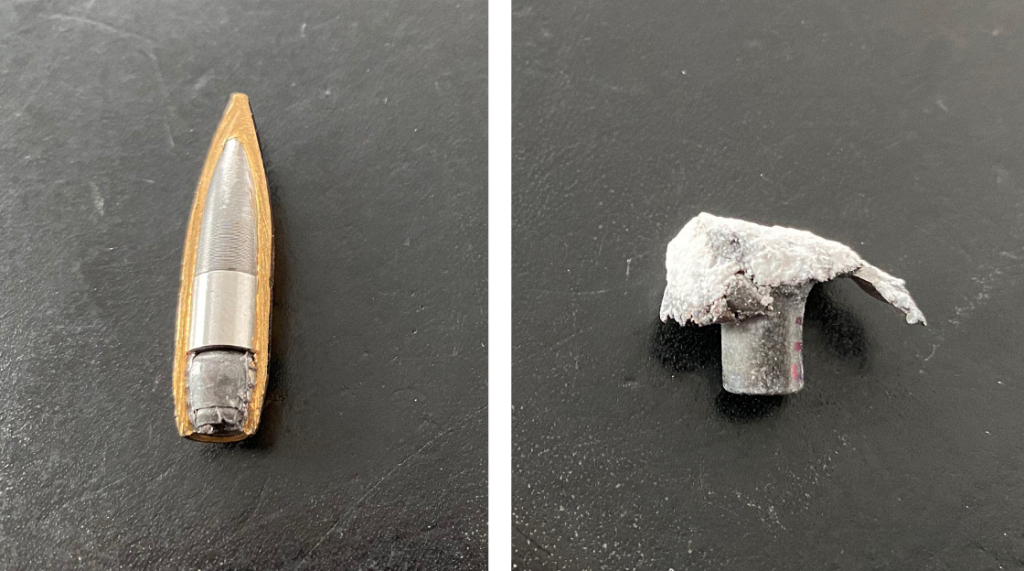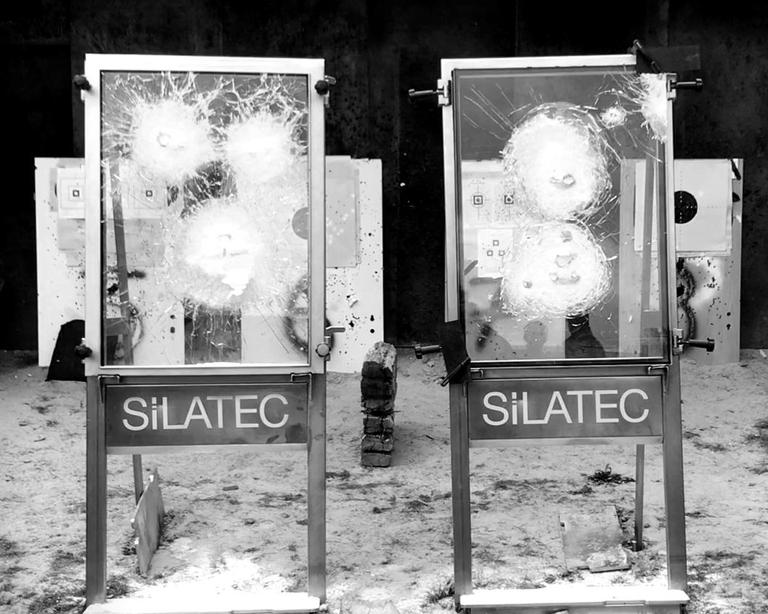An easy answer is not available. It depends strongly on the type of projectile how a bulletproof glass functions as well as on the design principle of the bulletproof glazing. The impact of the projectile on bulletproof glass represents a complex physical process, which runs during a very short time and under very large forces. In comparison to metals, wood or sand, glass shows a completely different penetration behavior against projectiles. The problem can be found in the breakage behavior of glass.


Glass breaks with a speed of several thousand meters per second. A projectile fired from a rifle, such as the AK-47 or the Nato rifle G3, has a lower speed of up to thousand meters per second.
This means: Glass breaks faster than the speed of the projectile. Therefore, the breaks in the glass are ahead of the projectile. While penetrating, the projectile only meets already destroyed glass. This significantly reduces the hold-back effect of the glass against the projectiles. To counteract this behavior, SILATEC does not only use glass but it applies additionally highly transparent plastic materials, such as polycarbonate.
The following is valid as a matter of principle: Bulletproof glass converts the point load of the projectile into an area load to stop the projectile. The cross section area of the projectile grows the more the projectile deforms after the impact. This increases the energy discharge of the projectile and the projectile will be slowed accordingly.
Whether the projectile deforms, fragments or breaks depends among others on the projectile design and its speed. So-called hard-core projectiles (AP projectiles - Armor Piercing) normally do not deform in bulletproof glass. However, soft core projectiles do. This is why it is more difficult to stop hardened Armor Piercing projectiles than soft projectiles.
Different projectiles can be fired from the same weapon and this can have very different impacts on the bulletproof glass pane. This is the reason why the often asked question can only be answered conditionally:

It depends strongly on the ammunition that is used. Is hard-core ammunition (AP) used or ammunition with a soft core? Bulletproof glass that protects against hard-core ammunition is normally thicker than the glass that “only” protects against soft core projectiles. SILATEC offers both variants. The type SILATEC AK47 NS 36/76 protects against “standard” ammunition. And the glass type SILATEC AK47 NS 62/141 offers protection against hard-core ammunition (AP).
By the way, we test these panes also in the home country of the Kalaschnikow - in Russia.

This is how bulletproof glass is tested.
You will learn here how we test bulletproof glass.
The angle of impact on bulletproof glass also has an influence on the protective effect of the glazing. The following simplified description is valid: The smaller the impact angle the less critical this is for the bulletproof glass because the projectile must overcome more material. The bulletproof glass experiences the highest load for a 90° angle, which means that bulletproof glass is normally tested with a 90° impact angle.
It is also decisive how and whether the bulletproof glazing splinters on the defense side, i.e. the protected side. A differentiation is therefore made in splinter-free glazings (NS = no spall) and such with splinter development (S = spall).
Splinter-free (NS) can be achieved by using a plastic material, ideally polycarbonate, instead of glass as the last “glass plate”. Another option is to produce the bulletproof glazing thicker, which means that the projectile does not break the last glass plate. However, thicker also means more weight. Bulletproof glass by SILATEC is especially thin and weighs 50% less than traditional armored glass.